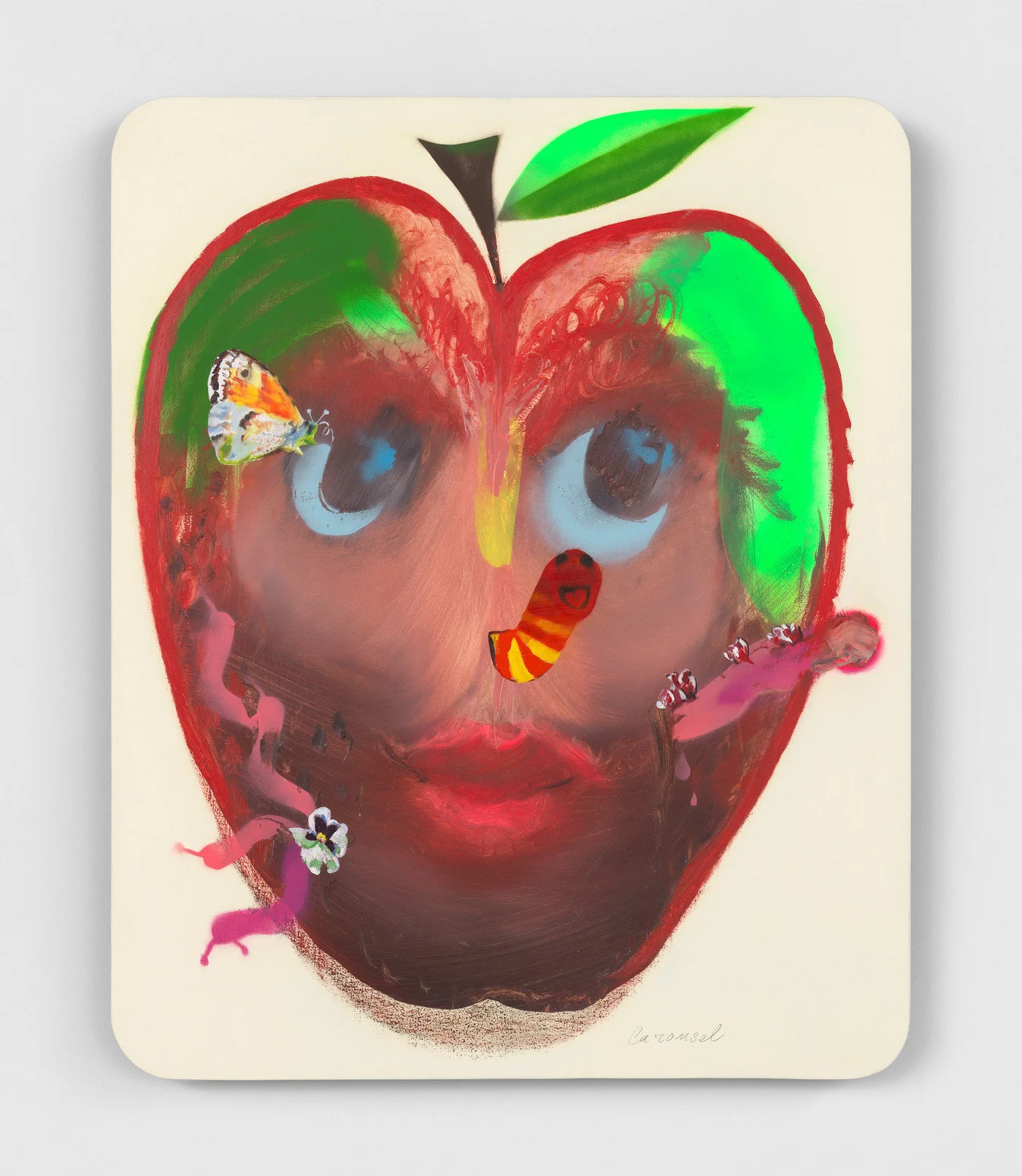Ewa Juszkiewicz
“In vain her feet in sparkling laces glow'“
New York, Park & 75
In her portraits of women, Juszkiewicz treats the female body as modular and sculptural, turning genre conventions inside out. Beginning with images drawn from the Western canon, she adds touches of the surreal, the fantastical, and the grotesque. Her subjects, carefully posed and dressed luxuriously, are hybrid characters that mix elements of nature and culture, producing results that are at once familiar and uncanny.
Installation view Artwork © Ewa Juszkiewicz. Photo: Rob McKeever, Courtesy Gagosian.
Since 2011, Juszkiewicz has been making oil portraits that closely mimic historical European portraits in form and technique. Her sources date from the Renaissance through the nineteenth century. However, at the crucial locus of portraiture—the face—the painting veers away from history and into the artist’s imagination, toward both the ridiculous and the sublime. In this series of new paintings, by obscuring the expressive potential of the face, Juszkiewicz suggests the schematic representation of women in history, and the absence of women’s self-expression in history told by men. In Untitled (after Elisabeth Vigée Le Brun) (2020), the figure is posed in a landscape with familiar neoclassical elements, but in place of the subject’s head and shoulders is a towering swathe of fabric, arranged in a pile and topped with foliage, alluding to the degree to which the woman’s identity is constructed by the elements of dress and class signifiers.
“I find the boundary between beauty and ugliness very fluid.
—Ewa Juszkiewicz”
Ewa Juszkiewicz, Photo: courtesy the artist, Courtesy Gagosian
Through meticulous technique and an acute sensitivity to color, Juszkiewicz engineers strangeness without compromising the aesthetic harmony of the images from which she works. Classical in method but subversive in intent, her paintings eerily deconstruct ideals of feminine beauty and other societal clichés. In remaking depictions of the wives, mothers, or daughters of privilege, but stripping away what remains of their subjective individualities, Juszkiewicz’s faceless portraits narrate a history of feminine erasure that courses through the Western art historical canon.








